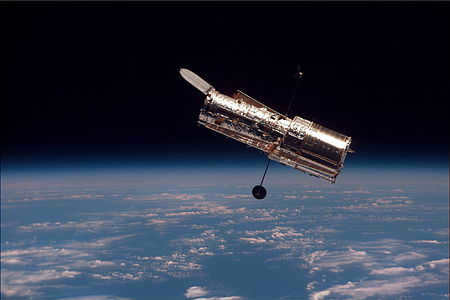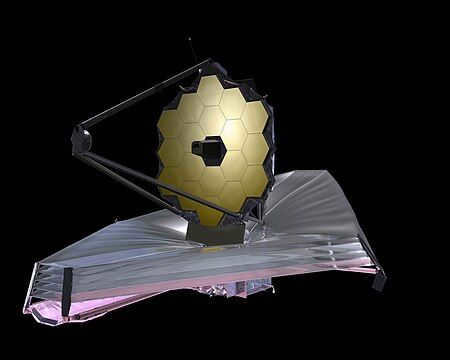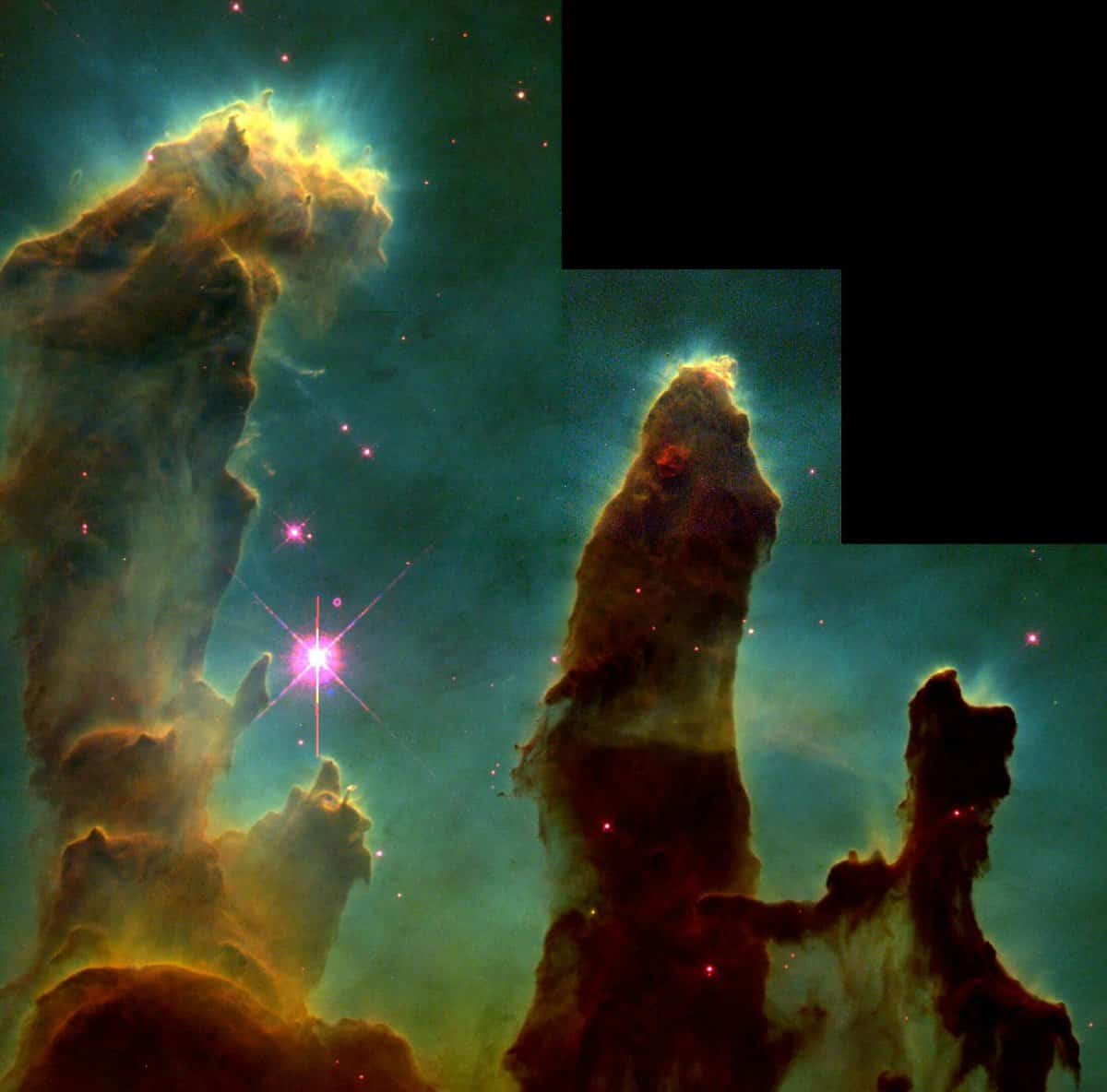Astronomy became the first field of study to achieve a high level of understanding, capable of making accurate predictions about the movements of celestial bodies as early as the second half of the 1st millennium BC. The early success of astronomy, in comparison to other natural sciences like physics, chemistry, and biology, can be attributed to several factors. Firstly, the subject matter of early astronomy had the advantage of being stable and simple – the sun, moon, planets, and stars moved in complex but predictable patterns. Secondly, astronomy was closely linked to mathematics, so much so that in ancient Greece it was often considered a branch of mathematics. This may seem paradoxical to modern readers, as contemporary exact sciences are seen as complex. However, in ancient Babylonia and Greece, astronomy progressed rapidly because the motion of the planets could be analyzed mathematically. And lastly, astronomy flourished due to its connections with religion and philosophy, which gave it social significance.
Ancient Astronomy: Understanding the Cosmos in the Past [ edit correct code ]
The Significance of Astronomy in Prehistoric Eras [ edit correct code ].
In the distant past, our ancestors developed a profound knowledge of the cosmos by meticulously observing the movements of celestial bodies such as the sun, moon, and stars. This understanding of astronomy proved vital in tracking the changing seasons, which enabled them to determine the optimal time for planting and harvesting crops. Moreover, this celestial knowledge also facilitated their ability to discern the movements of animals, aiding them in deciding when it was most opportune to embark on successful hunting expeditions. To solidify their comprehension of the celestial dance, numerous ancient civilizations constructed awe-inspiring monuments and structures, including the legendary Stonehenge, as a means to precisely track the sun’s trajectory and the cyclical transformations of the seasons.
Moreover, our prehistoric predecessors utilized their celestial wisdom not only to track cosmic entities but also to explain natural phenomena such as eclipses and meteor showers. This knowledge, in turn, served as the foundation for creating calendars and accurately measuring the passage of time.
Ancient civilizations developed myths, tales, and legends regarding the stars and constellations, frequently ascribing them with divine influence. This wisdom was transmitted through generations and continues to be utilized in certain cultures presently.
Astronomy in Mesopotamia [ edit edit code ].
Ancient astronomy in Mesopotamia, now part of modern Iraq, can be traced back to at least the 2nd millennium BC. The civilizations of Mesopotamia had a deep understanding of the stars and constellations, which they used to create detailed star catalogs. Additionally, they were able to accurately predict the movements of the sun and moon, leading to the development of calendars. Mesopotamian astronomers also closely observed the planets and developed an understanding of the zodiac. Their knowledge allowed them to record eclipses and make predictions about their occurrences. Furthermore, Mesopotamian astronomy played a significant role in their religious beliefs and cultural practices. Today, the influence of ancient Mesopotamian astronomy can still be seen in our modern understanding of the universe.

Astronomy in ancient Greece was closely intertwined with mathematics and philosophy. Greek astronomers possessed the ability to make more precise predictions about the planetary motion and were pioneers in creating the initial models of the solar system. They meticulously observed the movement of stars and constellations, contributing to the development of astrology as a science. Religion played a significant role in the correlation between astronomy and the Greeks, as they believed that the gods held control over the celestial bodies’ paths. Ptolemy, the most renowned Greek astronomer, authored the Almagest, an influential treatise on astronomy that endured for centuries. Numerous concepts originating from ancient Greek astronomy continue to be employed in scientific studies to this day.
Ancient Rome’s Fascination with Astronomy [ edit edit code ]
The ancient Romans held a deep reverence for the study of astronomy. This scientific discipline played a critical role in their society, enabling them to forecast the movements of celestial bodies and ascertain the ideal timing for agricultural endeavors and military campaigns, much like their counterparts in other ancient civilizations. Moreover, the Roman calendar, which was based on lunar cycles, became widely adopted across the globe and endured for countless centuries.
Furthermore, the ancient Romans demonstrated their ingenuity by constructing extraordinary astronomical devices, including the renowned Antikythera mechanism, which possessed the ability to predict eclipses. It is worth noting that the esteemed Roman poet Virgil paid homage to the constellations in his epic poem chronicling the Trojan War, meticulously describing their celestial formations.
The Roman Empire played a significant role in the field of astronomy. Julius Caesar and Augustus, the Roman rulers, introduced reforms to the Roman calendar which later became the foundation for the Gregorian calendar that continues to be followed in the present day. Additionally, the Romans were responsible for inventing the water clock and creating various other timekeeping instruments. One of the notable Roman astronomers, Ptolemy, authored the Almagest, a renowned treatise on astronomy that remained influential for centuries.
Ancient Astronomy during the Middle Ages [ edit edit code ]

Historians often point to the publication of Nicolaus Copernicus’ De Revolutionibus Orbium Coelestium in 1543 as the starting point of the Renaissance of astronomy. However, it is widely believed that the Renaissance of astronomy actually began around 1400 and lasted until approximately 1600. During this period, significant advancements were made in both the observational and theoretical study of astronomy.
Several noteworthy astronomers emerged during the Renaissance, such as Nicolaus Copernicus, Tycho Brahe, Johannes Kepler, and Galileo Galilei. These individuals made groundbreaking discoveries that revolutionized our understanding of the universe. Some of their notable contributions include the realization that the solar system is heliocentric, the identification of planets beyond Earth, and the establishment of the laws governing planetary motion.
Astronomy during the Enlightenment Era [ edit edit code ]
During the Age of Enlightenment (17th-18th centuries), astronomy underwent significant changes in its study and comprehension. With the introduction of new instruments and tools, astronomers made significant progress in their understanding of the universe. One of the most notable discoveries made during this period was the realization that planets orbit the Sun rather than the Earth. Although Nicolaus Copernicus proposed this heliocentric view of the universe in 1543, it gained acceptance as a more accurate model during the Enlightenment. Other important advancements during this time included the identification of Jupiter and Saturn’s satellites, the invention of the reflector telescope, and the measurement of stellar parallax, which provided evidence supporting the Sun as the center of the solar system. Additionally, this era witnessed a heightened focus on comprehending the composition and movement of comets, the nature of nebulae, and the process of star formation. Through their discoveries, Enlightenment astronomers laid the groundwork for future scientific breakthroughs, such as the formulation of the law of universal gravitation.
The 19th century witnessed significant advancements and breakthroughs in the realm of astronomy. This era saw the inception of novel instruments like the photographic plate and spectroscope, enabling astronomers to observe the universe with unprecedented precision and intricacy. Concurrently, groundbreaking theories emerged, including the big bang theory, seeking to elucidate the genesis of the cosmos. Our understanding of the solar system’s composition and the classification of stars also expanded considerably. Moreover, the 19th century marked the advent of successful attempts to capture the night sky through photography, facilitating the creation of more precise star and galaxy maps. In sum, the 19th century epitomized a period characterized by rapid growth and momentous strides in the field of astronomy.
Astronomy Advancements in the 20th Century [ edit edit code ]
The field of astronomy experienced significant progress during the 20th century. Utilizing cutting-edge technology, astronomers made groundbreaking discoveries that expanded our understanding of the universe. In the early 1900s, advancements in technology enabled astronomers to realize that the universe was much more vast and intricate than previously believed. Notably, Edwin Hubble, utilizing the largest telescopes available at the time, observed distant galaxies and determined that the universe was actually expanding. This revelation paved the way for the development of the widely accepted Big Bang theory, which suggests that the universe originated from a tremendously powerful event.
In the 1960s, the exploration of space reached new heights with the introduction of manned space flights. Astronauts embarked on missions beyond Earth’s atmosphere, enabling them to study planets, stars, and galaxies within our solar system and beyond. These space explorers utilized state-of-the-art space telescopes, which provided them with unprecedented insights into the vastness of the cosmos.
The Soviet Union achieved a groundbreaking milestone in space exploration on October 4, 1957, with the successful launch of Sputnik 1. This historic event, marking the birth of the space age, involved the deployment of the world’s first artificial satellite. Sputnik-1, weighing 184 pounds, orbited the Earth every 96 minutes. Equipped with two radio transmitters, it transmitted signals back to Earth, showcasing the potential of space exploration. This momentous achievement ignited a fierce competition between the Soviet Union and the United States to assert their supremacy in space technology. The race eventually culminated in the first manned space mission, with Soviet cosmonaut Yuri Gagarin becoming the first human to venture into space in 1961. In 1969, humans set foot on the moon for the first time, marking another significant milestone in space exploration. Since then, the pursuit of space exploration has only grown in intensity.
During the latter part of the 20th century, there were significant advancements in computer technology and software development that enabled astronomers to generate simulations and models of the cosmos. These models proved instrumental in enhancing their comprehension of the genesis and progression of galaxies, stars, and planets. Furthermore, this innovative technology facilitated the detection of celestial objects that were more remote and diminutive in size, such as exoplanets found in the orbit of distant stars. By the conclusion of the century, astronomers had successfully identified over 400 exoplanets, with numerous ones exhibiting potential habitability.
Astronomy in the 21st century [ edit edit code ]
The field of astronomy has undergone significant advancements in the 21st century. With the advent of new technologies and improved observational techniques, astronomers are now able to explore the universe in ways that were previously unimaginable.
One of the major breakthroughs in recent years has been the discovery of exoplanets – planets that orbit stars outside our solar system. This has opened up a whole new field of research, as scientists try to understand the potential for life on these distant worlds.
Another area of progress has been the study of dark matter and dark energy. While these mysterious substances cannot be directly observed, their effects on the universe can be detected. By studying the behavior of galaxies and the expansion of the universe, astronomers are gaining insights into the nature of these enigmatic phenomena.
Advancements in technology have also revolutionized our ability to observe the universe. Powerful telescopes such as the Hubble Space Telescope and the James Webb Space Telescope have provided us with stunning images of distant galaxies and nebulae. These images not only inspire awe and wonder, but also provide valuable data for scientific research.
Furthermore, the use of computer simulations and data analysis has become an integral part of modern astronomy. By creating accurate models of celestial objects and running simulations, scientists can test theories and gain a deeper understanding of the universe.
In conclusion, the field of astronomy has made significant progress in the 21st century. Through the discovery of exoplanets, the study of dark matter and dark energy, advancements in observational technology, and the use of computer simulations, astronomers are uncovering the mysteries of the universe and expanding our knowledge of the cosmos.


Astronomy in the 21st century has become an incredibly dynamic field, with scientists harnessing the power of modern tools and technology to explore the vastness of the universe. The rapid advancements in technology have provided astronomers with unprecedented access to new and valuable data. This has been made possible, in part, by the launch of two remarkable space telescopes: the Hubble Telescope and the James Webb Telescope.
The Hubble Telescope, first launched in 1990, has revolutionized our understanding of the cosmos and continues to make groundbreaking discoveries to this day. By peering into the depths of space, it has allowed us to glimpse the past and explore the farthest reaches of the universe. However, the James Webb Telescope, which was launched in 2022, has taken this exploration to new heights, offering an even more powerful and detailed view of the universe.
The Hubble Telescope is an optical telescope with a 2.4-meter primary mirror, which enables it to gather and concentrate light from faraway celestial objects. It revolves around the Earth at a distance of 600 kilometers and has the capability to observe remote galaxies, supernovae, and black holes. Moreover, Hubble has the ability to detect exoplanets, which are planets that exist outside of our solar system.
On the other hand, the James Webb Telescope surpasses the Hubble Telescope in size, as it boasts a main mirror that spans 6.5 meters. Equipped with a powerful infrared camera, it is capable of capturing images of the earliest stars and galaxies that took shape in the universe. Additionally, its spectrometer allows for the analysis of the chemical composition of distant objects.
The field of astronomy is filled with incredible scientific findings. One fascinating discovery is the confirmation of outer planetary systems orbiting numerous stars. To observe and study the vast universe, astronomers rely on advanced technology like space telescopes and automated cameras.
In recent years, machine learning has revolutionized the analysis of space data. This innovative approach enables astronomers to uncover previously unknown processes and delve into uncharted territories.
Let’s explore some of the most captivating discoveries made within the past decade:
- In 1995, scientists detected the first exoplanet, 51 Pegasi b, orbiting a star similar to our sun.
- In 2008, direct images of two extrasolar planets, Fomalhaut b and HR 8799 b, were captured.
- In 2017, astronomers made the groundbreaking discovery of the first interstellar object, Oumuamua.
- The most distant and oldest supermassive black hole ULAS J1342+0928 was discovered in 2018.
- The first recurrent fast radio burst FRB 121102 was detected in 2018.
- The first interstellar comet 2I/Borisov was detected in 2019.
- The first interstellar asteroid Oumuamua was discovered in 2019.
- The first exoluna Kepler-1625b-I was discovered in 2019.
- The first Earth-sized exoplanet, Proxima b, was discovered in 2020.
In general, astronomy in the 21st century is more active and advanced than ever before. The use of technology allows astronomers to make incredible discoveries that will greatly enhance humanity’s understanding of the universe.

In antiquity, all the foundations of modern culture were already present. It is interesting to explore the history of astronomy starting from this period. Although many ancient thinkers and figures traveled to Asian countries and visited Egypt, it was Ancient Greece and later Ancient Rome that managed to combine various knowledge and become the precursors of European science.
Anaxagoras (ca. 500-428 BC).
Not only was Anaxagoras one of the earliest philosophers, but he was also a founding figure in the field of astronomy. Anaxagoras dedicated his fortune to the pursuit of scientific knowledge, firmly believing that the study of the sun and moon in the sky was the purpose of human existence. In Athens, he took on a student named Pericles, who would later become the renowned tragedian Euripides.
Anaxagoras proposed that the sun was the primary source of the moon’s light and accurately explained the causes of lunar and solar eclipses. He was the first to assert that the sun is a scorching, radiant mass, a groundbreaking scientific achievement that required immense courage to challenge the prevailing belief in the divine nature of the planets and the heavens, governed solely by metaphysical laws.
As a result of his controversial ideas, Anaxagoras faced charges of impiety and was forced to flee, receiving assistance from his student Pericles.
Eudoxus (ca. 408-355 B.C.).
Eudoxus is widely recognized as the originator of the theory of concentric spheres centered around the Earth, which provided the initial mathematical framework for explaining certain aspects of celestial motion. Through his groundbreaking model, Eudoxus was able to accurately account for the movement of the known planets during his time, with the exception of Mars.
The influential teachings of Eudoxus were later employed by the renowned Aristotle, who further developed a planetary model based on his predecessor’s work.
Unfortunately, most of his works have been lost to history, but modern science still has some knowledge about him. This particular astronomer resided on the island of Rhodes and is renowned for his pioneering work in the development of trigonometry, a discipline essential to both mathematics and astronomy.
Furthermore, Hipparchus is credited with creating a comprehensive star catalog that documented 800 celestial bodies. The catalog not only listed the stars’ positions in the sky but also included their brightness measured in stellar magnitudes, a unit of measurement still utilized in contemporary astronomy.
The ancient Roman author Pliny the Elder described the accomplishments of Hipparchus in the following manner: “He undertook a daring task, even by the standards of the gods, by meticulously counting and naming the stars and constellations, all with future generations in mind. To accomplish this monumental task, he invented and utilized various instruments to accurately determine the position and magnitude of each individual star. As a result of his efforts, it is now possible to easily discern not only the birth and death of stars, but also their motion and changes in brightness».
Ptolemy (circa 100-178 BC).
Collected the existing knowledge of astronomy during his time and authored a significant book known as the Amagest (Great Book). This invaluable source of knowledge was preserved thanks to the efforts of Muslim astronomers, who reintroduced it to the European world.
Ptolemy made advancements to the theory of epicycles by introducing additional elements such as the equant, a point located inside the eccentric circle. The works of Ptolemy went on to influence multiple generations of renowned astronomers.
Aristarchus of Samos (310-230 AD): An Overview
After reading this concise reference publication, I hope you will appreciate the monumental effort these individuals put forth. Without the luxury of simplifying tools like calculators or computers, they completely transformed the world.
When discussing ancient times, we often focus on philosophers such as Plato, Aristotle, and Socrates. While they were certainly influential figures, let’s be honest, much of their conclusions were speculative and not always rooted in reality. Additionally, none of them were able to revolutionize our understanding of the stars and planets (though their contributions to global thought are undeniable).
In ancient times, individuals from the most remote societies believed that the Sun and the Moon were divine beings. They held the belief that the Earth was a flat surface, while the heavens were perceived as an enormous canopy, supported by towering mountains or sturdy pillars.
The ancient Greeks, between 600 BC and 200 BC, were able to move away from fanciful ideas and prove that the Earth is a spherical shape. The mathematician Eratosthenes, who lived in the 3rd century BC, accurately calculated the Earth’s circumference. By observing the Sun directly overhead in Siena (S) and measuring the angle of 7.2 degrees from the zenith in Alexandria (A), Eratosthenes was able to calculate the distance between A and S and determine the size of the Earth. The Greeks believed that the Earth was the center of the universe, with the Sun, Moon, and planets orbiting around it in circular paths, while the stars appeared to be fixed on a massive sphere that rotated once a day. You can find more information about these discoveries in Ptolemy’s influential work, the Almagest.
However, the quest in the indicated direction by Copernicus persisted. Numerous accurate measurements of the planets’ shifting positions were conducted by the Danish astronomer Tycho Brahe. The findings were then utilized by the German scientist Johannes Kepler, who demonstrated that all planets revolve around the Sun, not in uniform circular paths, but in stretched-out, elliptical paths. Between 1609 and 1619, Kepler unveiled his laws governing the movement of celestial bodies.
The origins of telescopes
Initially, early astronomers exclusively utilized refractor telescopes, which are optical devices that use a lens to gather light and another lens, known as an eyepiece, to magnify the image. However, the inherent limitations of lenses prompted astronomers to construct massive telescopes without a tube. Unlike refractors, reflector telescopes employ a mirror to collect light, offering numerous advantages. Stonehenge, an ancient stone structure located in England, was used as an observatory for studying the night sky. For a detailed exploration of the various types of telescopes, including their classifications and optical configurations, refer to the article “Optical telescopes – types, classification, optical schemes.”
The next significant milestone occurred with the introduction of the telescope. It was created in 1608 by Hans Lippershey, a Dutch artisan specializing in eyeglass production. However, it was the Italian astronomer Galileo Galilei who first utilized the telescope to observe the heavens. In 1609, Galileo constructed multiple telescopes, enabling him to uncover unprecedented discoveries. He observed craters on the Moon, sunspots, tracked the phases of Venus, and identified four satellites orbiting Jupiter.
Isaac Newton, a scientist from England, demonstrated that there is a mutual attraction between all objects and that this force, known as gravity, is influenced by both mass and distance. Newton’s findings provided an explanation for various celestial phenomena, such as the Moon’s orbit around the Earth and the planets’ movement in elliptical paths around the Sun, as described by Kepler’s laws. Additionally, Newton is credited with inventing a new kind of telescope called the reflector.
Using the astrolabe, an invention by the ancient Greeks, one can determine the precise location of various stars, as well as the time of their rising and setting. This device consisted of a fixed disk and a rotating frame, which was marked with the brightest stars. By rotating the frame, one could replicate the movement of the stars. By aligning the sighting scope with a particular star, its height could be determined.
Notable milestones in the history of astronomy:
1543: Copernicus introduces his heliocentric theory.
1576-1596: Tycho Brahe observes the planetary motion.
1608: Lippersguy invents the telescope.
1609: Kepler formulates his first law, stating that planets move in elliptical orbits.
1609-1610: Galileo observes the sky using a telescope.
1668 saw the construction of the inaugural reflector telescope by Sir Isaac Newton.
In 1687, Sir Isaac Newton presented his groundbreaking laws of gravitation and mechanical motion.
In ancient times, the earliest astronomers held the belief that all the stars were affixed to a colossal sphere, which completed a full revolution around the Earth in a single day. Presently, it is widely understood that the celestial luminaries are situated at varying distances from us, and their apparent motion around the Earth is attributed to the rotation of our planet on its axis. However, for the sake of simplicity in describing the position of stars, including their rising and setting, it is convenient to envision them as situated on the inner surface of a sphere known as the celestial sphere. While the Earth rotates from west to east, it appears to us that the celestial sphere rotates in the opposite direction, causing the Sun, Moon, stars, and planets to rise in the east and set in the west. Additionally, the Sun, Moon, and planets exhibit slow movement against the backdrop of stars.
Celestial sphere
The celestial sphere is characterized by having a north pole, a south pole, and an equator. At any given time of day, half of the celestial sphere is concealed from the observer by the horizon. Due to the apparent rotation of the sky, stars trace out circles of varying sizes around the poles.
Stars located near the pole are referred to as near-polar stars, as they never extend beyond the horizon. The determination of which observed stars are near-polar can be made by knowing the latitude of the observer’s location. Stars near the opposite pole never rise above the horizon. Those situated in the middle region of the celestial sphere emerge above the horizon at a specific hour and later set. The Sun moves gradually across the celestial sphere in a large circular path known as the ecliptic.
Astrophotography: Capturing the Beauty of Sunrises and Sunsets
As our planet makes its journey through space, the captivating phenomenon of sunrises and sunsets never fails to amaze us. The rotation of the Earth, from west to east when observed from the North Pole, brings about these awe-inspiring moments. In this series of images, we witness the changing position of a telescope as the Earth gracefully rotates.
Accompanied by compass arrows pointing to the cardinal directions, we can track the telescope’s movement from east to west. In the first image, the telescope is directed towards the east, capturing the star as it begins its ascent above the horizon. As time progresses, the star reaches its highest point in the sky, as depicted in the third image. Finally, in the fifth image, the telescope faces west, capturing the star as it sets in the western part of the horizon.
For astronomy enthusiasts, these images also serve as a visual representation of the apparent path of the star in the sky. They provide a glimpse into the celestial dance that unfolds each day, reminding us of the wonders of the universe.
Measuring Distances
As the Earth orbits around the Sun, the position of a star near us in the sky changes. A star that is further away from us also moves, but the movement is less noticeable. This noticeable shift is known as parallax. Astronomers can determine the distance between the Earth and the Sun by measuring parallaxes, and then use this information to calculate the distance between the Sun and a particular star.
The Shape of the Big Dipper is Undergoing Transformation
Each star in outer space is in constant motion, but their distances from us are so vast that we are incapable of perceiving these changes with our unaided eyes, even within the span of a human lifespan. The top portion of the diagram showcases the familiar current configuration of the Big Dipper, while the bottom portion illustrates the projected arrangement in approximately 100,000 years. This alteration in the celestial arrangement is known as proper motion. Barnard’s dim red star, situated 6 light-years away, possesses the highest proper motion among all identified stars. Over a span of 180 years, it traverses a distance in the sky that is equivalent to the size of the Moon.
The emergence of modern astronomy is linked to the rejection of Ptolemy’s geocentric model of the universe in the 2nd century and its replacement by Nicolaus Copernicus’ heliocentric model in the mid-16th century, along with the advent of telescopic observation of celestial bodies by Galileo in the early 17th century and the unveiling of Isaac Newton’s law of universal gravitation.

Table of Contents
- Who was the initial astronomer?
- Who made the initial discovery of the stars?
- What is the definition of an astronomer?
- Who examines the planets?
- Who played a significant role in the advancement of astronomy?
- Who was the first to discover the sun?
- What is the largest star in the world?
- How many stars are there in the sky?
Who was the initial stargazer?
Tycho Brahe, born on December 14, 1546, was the first stargazer. He was a Danish astronomer and one of the pioneers of modern astrometry, having been born 470 years ago.
When and where did the field of astronomy originate?
Astronomy originated in ancient China 2,000 years before the birth of Christ. The movements of the Sun and Moon were extensively studied by Chinese astronomers, allowing them to predict solar and lunar eclipses. Astronomy, like other sciences, emerged from the practical needs of humanity.
When did the first astronomer emerge?
Astronomical activity can be traced back to at least the VI-IV millennia BC, with the earliest mentions of celestial bodies found in the Pyramid Texts, which date back to the XXV-XXIII centuries BC as a religious monument.
Who made the most significant contribution to astronomy?
- Nicolaus Copernicus (1473 – 1543)
- Galileo Galilei (1564 – 1642)
- Tycho Brahe (1546 – 1630)
- Johannes Kepler (1571 – 1630)
- Isaac Newton (1642 – 1727)
- Robert Goddard (1882 – 1945)
- Edwin Hubble (1889 – 1953)
- Wernher von Braun (1912 – 1977)
| Also known as | Author of the Laws of Planetary Motion |
| Signature | |
| Quotes in Wikiquote | |
| Media files on Wikimedia Commons | |
Who was the initial person to make the groundbreaking discovery of the stars?
Hipparchus, an ancient Greek astronomer, holds the distinction of being the first person to reliably observe a variable star in approximately 134 B.C. This groundbreaking discovery paved the way for future astronomers to regularly identify and study new stars and supernovae. For instance, during the 10th and 17th centuries A.D., Chinese astronomers made significant contributions to the field by discovering new celestial bodies.
When did the field of astronomy officially transition into a scientific discipline?
Astronomy has a rich and ancient history as a scientific discipline. Historians have confirmed that the earliest recorded references to astronomical observations date back to the 8th century BC, marking the beginnings of the scientific study of the cosmos.
What is the definition of the term astronomer?
An astronomer, also known as an astrophysicist, is a scholar who examines celestial entities, including planets, stars, and galaxies. … This encompasses researchers from diverse disciplines like physics, geology, and engineering who explore topics relevant to the field of astronomy.
Who is involved in the study of planets?
Answer: Astronomy is the scientific field that studies various celestial objects such as stars, planets, and comets. The individuals who are involved in this field are known as astronomers.
Who laid the groundwork for astrophysics?
Karl Schwarzschild (1873-1916), a German astronomer, is one of the pioneers of theoretical astrophysics. He was born on October 9, 1873, in Frankfurt am Main, Germany.
Who was the first to explore space?
Konstantin Eduardovich Tsiolkovsky and Sergei Pavlovich Korolev are considered the founders of cosmonautics. These two individuals established the foundation for space exploration. The space age began on October 4, 1957, with the launch of the first artificial Earth satellite (PS-1).
When was the study of astronomy discontinued?
Who was the first female astronomer?
The United States has given birth to Maria Mitchell, the first professional female astronomer, in 1818.
Who was the first astronomer to divide?
| Date of birth | circa 190 B.C. |
| Place of birth | Nicea, Iznik. |
| Date of death | ca. 120 B.C. э. |
| Place of death | Rhodes, Greece or the Roman Republic. |
Who had a significant impact on the advancement of astronomy?
Who was the initial person to uncover the Sun?
Polish astronomer Nicolaus Copernicus (1473-1543).
What is the term for the field of study that focuses on celestial objects and phenomena?
An astronomer (the older term astronomist is also utilized in professional discourse) is a scientist who specializes in the study of astronomy.
What is the biggest star in the universe?
The largest star known to man is VY Big Dog, also called VY Cma, situated 5 light years away from Earth and boasting a diameter of 2.9 billion kilometers, which is around 1,800 times larger than the Sun.
The lifespan of a star is determined by its mass. For instance, a star like the Sun has a lifespan of approximately 10 billion years. A star with a mass 10 times smaller than the Sun can live for trillions of years. However, the most massive stars, with a mass exceeding that of the Sun by 100-150 times, only survive for a few million years.
What is the number of stars in the sky?
While pondering the quantity of stars that scatter the night sky, scientists have conducted calculations and determined that there are approximately 9,096 visible stars spanning the celestial dome. However, since our view is limited to only half of the astronomical sphere at any given time, we must divide that figure by two to arrive at a count of 4,548 stars (approximately, as this may vary depending on the season).
Nevertheless, due to the economic hardships faced by the Soviet Union and the resulting lack of funding, the teaching of astronomy in schools had already dwindled by the time the country dissolved. In 1993, astronomy was eradicated from the mandatory curriculum in Russian schools, effectively removing it as a core subject.





